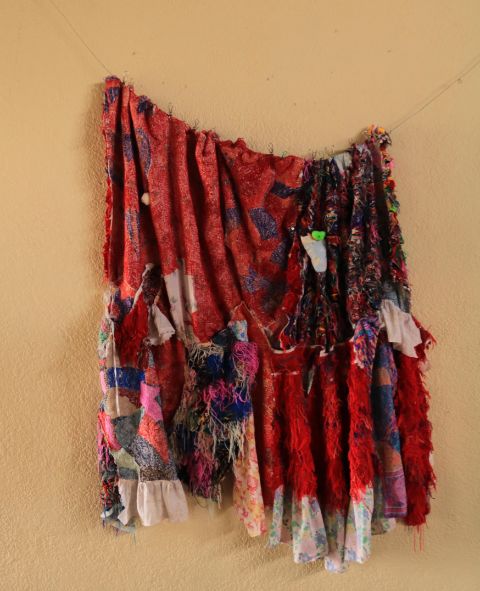Georgina Maxim

Works in progress. Photo: Tatenda Gora
Growing up in newly independent Zimbabwe, artist and storyteller Georgina Maxim has developed an artistic practice that centres the revival of memory and collective writings of untold stories. First as a way of finding and strengthening the lifeline that connects her to her deceased mother, and then as a tool to connect threads of histories from the past to the future. By stitching together textiles from Zimbabwe, mixed with personal clothes she collects from people, she creates tapestries that stand as witnesses of time, but also constitute a metaphor for the ephemerality of life and the fragile presence of human beings on earth. The practices of stitching and weaving found in traditions from the African continent and across the world are often associated with the making of symbolic garments used in rituals of initiation or to mark significant transitions such as birth, marriage, or death. Care, patience, and resilience are required for the hands that connect memory together through such practice. As a contribution to the physical environment of HKW and the collective memories brought into the space through O Quilombismo, Maxim drapes two of the columns in the main entrance with her majestic tapestries—and by extension the care, love, and resilience embedded within them.
Commissioned by Haus der Kulturen der Welt (HKW), co-produced by Georgina Maxime and HKW, 2023.
Works in the exhibition: Borrowed books and underlined statements I (2023), textile, 325 × 270 cm; Borrowed books and underlined statements II (2023), textile, 214 × 315 cm. Courtesy of the artist